Meet scientists who take on the study of life
From birds to salamanders, these STEM women are all about biology
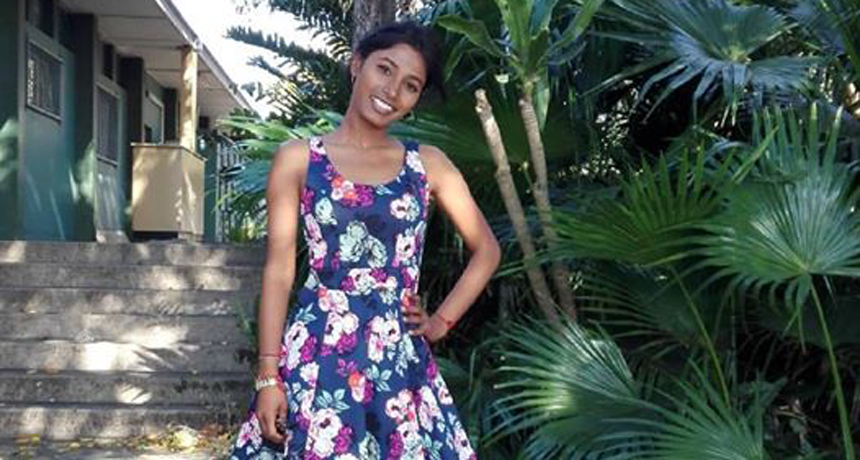
Lisa Chella studies Zulu sheep — a type of sheep that is native to South Africa.
Namhla Mdutshane
When Science News for Students asked for women in science, technology, engineering and math to send us pictures of themselves, we got answers from all aspects of STEM. We received more than 150 responses! They include 18 countries and all seven continents.
We’ve put some photos in our feature story on women in science. But we wanted to make sure they all got their chance to shine. So this week, we are sharing their stories. Here are women who are taking on the study of life. Meet our biologists!
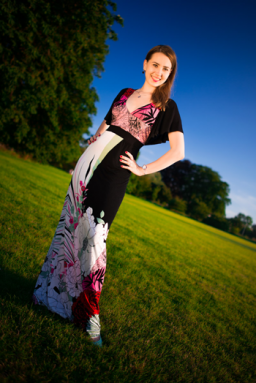
Joanna Bagniewska
“I’m a zoologist, and I study invasive species,” says Bagniewska. “These are species that have been brought by humans, accidentally or intentionally, to new places and have become a threat to native biodiversity there.” She works at the University of Reading in England.
Bagniewska’s life has taken her around the globe. Originally from Poland, she’s lived in Italy, Thailand, China, Germany, the United States and England. “In my spare time,” she says, “I now work with migrant communities in Britain.”
Lisa Chella
“My research and life’s work so far is conservation of indigenous species,” says Chella. She’s a biologist at the University of Zululand in Mangeze, South Africa. She studies a type of sheep — the Zulu sheep — and has mapped out its genome.
Chella is fearless around some animals. She’s handled crocodiles, pythons and chameleons, for instance. But her weakness? “I am utterly and completely terrified of moths and butterflies,” she says.
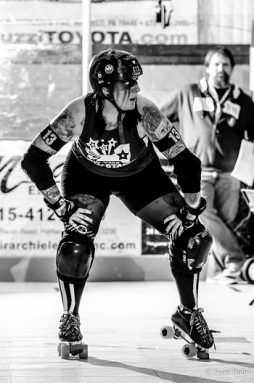
Lorelei Eschbach
Ever wondered where the animals in your classroom come from? Eschbach knows. She works at Ward’s Science, located in Rochester, N.Y. “Basically, whatever science needs your classroom has, we provide it,” she says. “I more specifically work in the algae and protozoa lab. If a class needs amoeba or tardigrades, I culture them and prepare them for shipping.”
As part of her job, Eschbach gets to take her work on the road. She heads to schools to show off what is housed in the entomology lab, she says. “We are the only company that sells giant tropical millipedes in the [United States], so it is an awesome experience for the students to get to hold one.”
Diana Freire
Why submit your own picture when you can make a video with all of your fellow scientists? Diana Freire, a graduate student at the European Molecular Biology Laboratory in Hamburg, Germany, made us this great video! Check out all the science she and her colleague do and the fun they have.
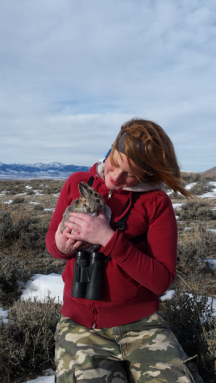
Charlotte Milling
Milling is a graduate student in ecology and conservation at the University of Idaho in Moscow. She is studying why animals choose to live where they do and the influence of physiology on their behavior and personality. “Knowing how and why an animal uses the habitat and resources it does allows us to make informed and effective wildlife management decisions,” she notes.
Scientist is definitely Milling’s first choice of career. But if she could be anything other than a scientist, she says, “I would be a baker and a track coach, because I love pastries, running and teaching, and the schedules are compatible.”
Kerry “K” Nicholson
Many people might see a bear and run. Not Nicholson! She’s a carnivore biologist who’s studied everything from bears to lizards in places as varied as Texas, Antarctica, Sweden and South Africa. But in the end, it was Alaska that drew her. “Although Sweden was filled with meatballs and Prinsesstårta, it was just not the same midnight sun,” she says. “The moose were too small, reindeer too nice and too few wolves or bears — this Goldilocks needed to go home.”
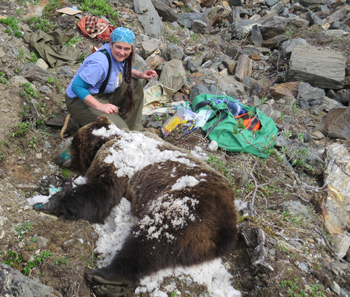
Now she’s a biologist with the Alaska Department of Fish and Game in Fairbanks. But that’s not all. Nicholson throws pots, kayaks, does traditional Native Alaskan bead work — and has even learned how to breathe fire.
Agnés Pelletier
Have you ever wondered why marmots get divorced? Agnés Pelletier has. She is a biologist who teaches at universities in Winnipeg, Canada. “I teach biology, genetics, environmental science and communication,” she says. “I have studied why black bears that should supposedly be similar have genetic differences, as well as…why marmots divorce!”
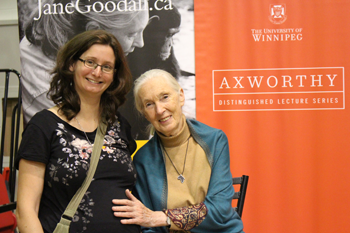
Science has given Pelletier an opportunity to meet people she admires. “Jane Goodall has always been my hero,” she says. Goodall is a famous primatologist and one of the world’s greatest experts on chimpanzees. “When I was expecting my second child, I knew that if it ended up being a girl, I would give her ‘Jane’ as a middle name,” Pelletier says. “I had the immense pleasure to tell Jane Goodall in person when she came to visit my university.” Pelletier even got to take a photo with Goodall “holding” her baby while she was pregnant.
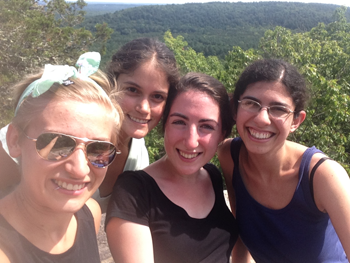
Emma Sedivy
Every scientist needs a little time away from the lab. Sedivy and her colleagues like to hike. “Here’s our summit selfie from a recent trip,” she says. Sedivy is a graduate student in biology at the Massachusetts Institute of Technology in Cambridge. She studies “how individual cells made complicated decisions about life and death,” she says.
Her friends Nicole Aponte Santiago, Sonya Entova and Amelie Raz are also all scientists. Santiago studies the brain. Entova studies how individual cells take in the sugars they need to live. Raz studies regeneration — how animals can regrow parts of themselves that become injured. Sedivy says Raz is “committed to developing a real-life Wolverine,” the X-Men character that can almost instantly recover from any injury.
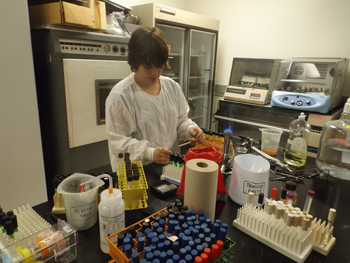
Nadya Sotnychuk
Research doesn’t have to wait until graduate school. Nadya Sotnychuk is a college student at Ohio Wesleyan University in Delaware. She studies how microbes affect bird feathers, and she’s already making waves. “I just received an honorable mention for my undergraduate poster presentation at the NAOC VI (North American Ornithological Conference) in Washington, D.C.,” she notes.
College is a great time to make sure you do it all. Sotnychuk is majoring in zoology and psychology — and minoring in theater.
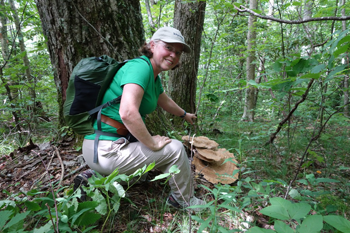
Joan Strassmann
“You can get paid to explore the forests, to study whatever you like?” Strassman recalls discovering when she was younger. “I signed on and never looked back.” She revels in the freedom of scientific study and is now a biology professor at Washington University in St. Louis, Mo. She studies social amoebas. These single-celled organisms are a lot smaller than the fungus she found in the forest.
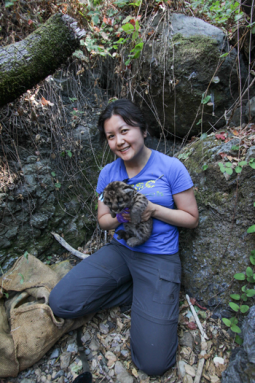
Yiwei Wang
Very few people have been able to hold a baby mountain lion for the sake of science. Wang is one of them. She started out studying mountain lions, but now she’s the executive director of the San Francisco Bay Bird Observatory in California. Her research has taken her around the world and placed her face to face with many different animals. Or maybe that’s trunk to trunk. “An elephant almost got its trunk on me in a car while I was working in Kenya,” she recalls.
Heidi Ware
“When I was a kid, I was the nerd who loved Lord of the Rings and insects,” Ware recalls. Now, she says, she’s mostly a “bird nerd.” She studies birds professionally at the Intermountain Bird Observatory in Boise, Idaho. “I love working with birds because you can study them anywhere,” she says. “They are on every continent and in most any habitat.”
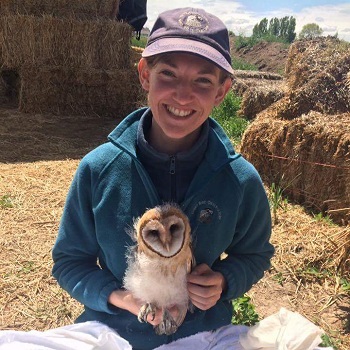
Jessica Whited
Biology can be exciting — so exciting it gets you out of bed in the morning. “Despite all the late nights studying and in the lab, I’ve never ever had a cup of coffee — and I honestly don’t need it to get out of bed each day and do what I do,” says Whited. She’s a biologist at Harvard Medical School in Cambridge, Mass., and nearby Brigham and Women’s Hospital. She studies how animals such as salamanders can regrow entire limbs. “I am a huge believer in little girls growing up and not doubting they can do whatever they want,” she says.

Ann Marie Rivera
Women in science come from all walks of life. The video below shows off the wonderful professors of Mt. San Jacinto Community College in California. They started out in medicine, environmental consulting and even yoga!
Follow Eureka! Lab







